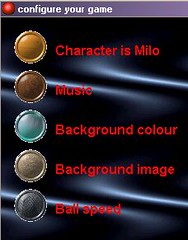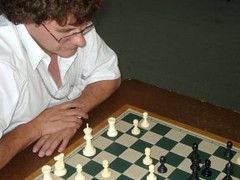I'm republishing a section of an article I wrote in 1997 below. It was a response to a critique of the uses of computers in schools by a self confessed neo-Luddite, Theodore Roszak (Roszak, 1996). I've republished the full article,
Invitation to Immersion, on my website.
After intensively studying various learning theories in the 90s I sort of lost interest after writing this article. It didn't seem to be going anywhere and more importantly, I realise now, that I moved over to the view that learning theories in the future (meaning now) would actually be
embedded in software and so it was more important to study and learn software, with that background realisation in mind.
Without abandoning that insight, I'm now being drawn into discussion of learning theory following recent discussions with Tony Forster,
Jacob Habgood and Keith Richardson as well as reading some articles and books by
James Paul Gee and
Clark Aldrich. Nothing stands still and learning theory has moved on, I need to keep up.
My views have changed too over the past seven years but neverthless I offer the following as a worthwhile starting point for discussion, even though I'm no longer in full agreement with my former self. More on that later.
who speaks for learningSuccessful learning invariably occurs when a child is immersed into a healthy learning environment from a young age. What are the blocks? Well, clearly many families do not create healthy learning environments at home. Few disagree with this.
I also believe that many Schools do not create healthy learning environments either. This idea may be more controversial but it boils down to the government obsession with power and measurement, which filters down through the hierarchy to teachers and then to students. It's really quite simple. When people are made powerless, when they are given little or no say over what, how, when or why they should learn something and then threatened with measurement of their performance, real or deep learning does not occur. What are the alternatives?
Developmental theorists who have studied how children's minds evolve (Papert, 1993) or who are attempting to grow artificial minds (Emergent artificial intelligence theorists like Minsky, 1988) or who have studied how biological evolution works (Eldredge, 1996) are among those who speak for learning. In these models new things emerge spontaneously from favourable environments. There is no central plan, outcomes are often unpredictable and measurement is irrelevant. In what follows I attempt to outline some of the principles of constructionist learning that emerge from these models and how they can be applied to learning with computers.
Computers are such great tools that even neo-Luddites use them to redraft their critiques of computer cultures. While School and neo-Luddites continue to conceptualise the computer as a logical machine then the computer and the curriculum will continue to evolve in harmony, but at the expense of learning.
It is more forward thinking to use non-logical metaphors of the computer. One of my favourites is the rorschach. Different people will use the computer in their own way, to explore their own interests. Another favourite is the mirror. Every now and again you catch a glimpse of yourself in the computer, especially if you are using it creatively.(Turkle, 1996)
Non logical metaphors of the computer create a tension between the computer and the curriculum whereby the computer becomes the medium that carries the quality and the curriculum becomes the technical instrument. The computers becomes an evocative, flexible medium that invites immersion. Computer games are addictive and fun (as the neo-Luddites point out). It needs to be added, however, that some of the best computing software is an invitation to immerse yourself into a microworld where significant learning is likely to occur, provided you have a teacher who understands how the software is meant to be used. Counterposed to the neo-Luddite critique of mindless play is the constructionist idea of hard play.
Play is OK. We should take a hint from children who learn more by play before they get to school than they learn at school. Play is the enemy of the government model of power and measurement. Play laughs at power and defies measurement. Play is a favourite of bored or rebellious students. But what is the Educational utility of play? Difficult question but a real problem for School at the moment is that its environment makes it virtually impossible to even seriously pose that question.
The emotional precedes the cognitive. Many kids say they dislike school and dislike many of their teachers. How can real learning occur for these kids in these classes? Perhaps personal appropriation, making something your own, is the single most crucial point of successful learning. Deep learning will not occur unless there is that feeling of intimate engagement or falling in love with the subject. Real knowledge is personal knowledge. Any learning regime that neglects the motivational aspect will end in disappointment.
Our knowledge is like our relationships with other people, full of subtle nuances and never ending contradictions. We learn new things by becoming good at making connections and discerning healthy relationships. This is a much healthier way of looking at knowledge than the hierarchical checklists suggested by centralised curriculum like Statements and Profiles.
Trust your intuition. Frankly, logic is over-rated. Logic doesn't give us insights in the first place. It just lets us formalise and rationalise our thoughts after the event.
Take risks! This goes beyond the passive truisms, 'that we all make mistakes' and that 'mistakes are a natural part of learning.' Everyone agrees with these truisms in a disconnected theoretical sense separated from real life situations where we have to admit that we were wrong. How many teachers actually say to their students, 'I was wrong' or 'I don't know'.
'Take risks' encompasses more of the spirit that it is good to make lots of mistakes and make them quickly as part of getting on with learning. The faster we fail the better it is because then we will get onto something worthwhile quicker. Risk taking is an active virtue.
Can you imagine an Education System adopting a policy of fast failure? How would that fit with a model of Standards and Accountability which engenders low risk activity?
Take your time. I am now convinced that learning how to learn techniques that advocate heuristics such as concept mapping, Gowin's knowledge Vee (Novak and Gowin, 1984) or mind mapping mainly work because the process of using the heuristic means the learner spends more time with the problem. A common reaction of students to failure, boredom or disempowerment is to use an endless variety of techniques to spend less time on the task. It follows that anything that bores or disempowers students is bad for their learning. At School (particularly Secondary) we teach kids that specific subjects should be studied for fixed time intervals at certain times of the day and then suddenly stopped, when the bell rings.
A good discussion promotes learning. Good plants won't grow in poor soil. A rich soil for intellectual growth can only come about through active discussion, negotiation, argument and exploration.
Reference:Eldredge, Niles (1996). Reinventing Darwin: The Great Evolutionary Debate. London: Phoenix
Minsky, Marvin (1988). The Society of Mind. London: Picador.
Novak, Joseph and Gowin, Bob (1984). Learning how to Learn. Cambridge: Cambridge University Press.
Papert, Seymour (1993). The Childrens Machine: Rethinking School in the Age of the Computer. New York: Basic Books.
Roszak, Theodore (1996). Dumbing us Down. New Internationalist, Dec. 1996, 12-14
Turkle, Sherry (1996). Life on the Screen: Identity in the Age of the Internet. London: Weidenfeld & Nicolson







